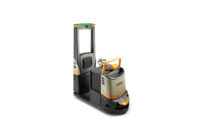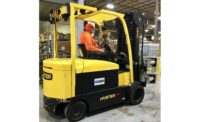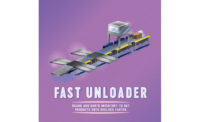Equipping pickers with automated technologies creates tangible benefits

Managing the supply chain and moving products within refrigerated and frozen food warehouses continues to become more complex as the grocery market goes through unprecedented evolution. And, more is certainly on the horizon, as Amazon moves forward with ownership of Whole Foods.
This acquisition alone – never mind the recent innovations impacting the warehouse – is causing executives to shift focus and investments toward the layout, speed, flexibility and productivity of their distribution centers. Further, many refrigerated and frozen food processers are seeking solutions that will help them evolve their business to align with changing consumer interests and expectations.
One such solution to be considered is automation.
New lower-cost sensors and other improvements in technology are making equipment such as automated forklifts, autonomous guided vehicles (AGVs) and mobile robotics more practical for a wider range of applications in warehousing and distribution. However, the vision of a food or beverage warehouse with all tasks being performed by automated vehicles is still in the infancy stage for most companies, and may not even be practical for some time.
What is practical – and easily applicable – is pairing order pickers with automated technology to help companies better manage mixed pallets, realize efficiency and productivity gains and improve employee retention rates.
Simply, the low-level order picking process in warehouses, including in cold storage environments, is inefficient. In most of these processes, there are typically up to nine actions an operator takes between each pick. These include:
- Pick up case.
- Place on pallet.
- Walk to front of truck.
- Step on truck.
- Drive truck.
- Step off truck.
- Walk to case.
- Pick up case.
- Place on pallet.
Needless to say, order picking remains one of the most resource-intensive processes in the warehouse and a prime application for automation. In the frozen food warehouse environment, for instance, the process can often be difficult to fully automate because of the diversity of the pick list and established infrastructure.
So, where does opportunity exist? It’s in giving more power to the forklift operators to do their jobs faster and with less stress on their bodies.
Of the nine possible actions outlined earlier, four deal with moving the forklift down the aisle to the next pick location. This continual repositioning of the forklift is time consuming, increases physical demands on the operator and can create safety hazards. In addition to requiring the operator to get on and off the forklift for each move, this approach causes operators to pick in a pattern that leads them to circumnavigate the truck multiple times as they work back and forth across the aisle, thus further increasing pick times.
What if the operator had a wearable, wireless device that advanced an automated forklift down the aisle without the operator ever touching the vehicle? The number of actions could be reduced by 44%, creating tangible benefits, according to a proprietary study conducted through user testing.
By allowing operators to work from behind the forklift, moving back and forth across the aisle in an efficient Z-shaped pattern, you can minimize the distance operators travel and reduce the physical demands of the job.
Operators no longer have to interrupt their picking to get on and off forklifts, and can position trucks in the necessary position. Simple steer correction technology on the forklift keeps the truck in proper alignment with the aisle. Forklift sensors help enhance personnel, product and rack safety.
This technology, when supported by other process improvements, has shown to cut an additional 5 seconds per pick off the process, essentially doubling the improvements realized through wearable WMS technology. If you assume a typical operator does about 100 picks per hour, a 5-second reduction cuts the average pick time from 36 seconds to 31 seconds, enabling an additional 13 picks per hour per operator with less physical effort. That 13% productivity improvement can minimize labor challenges, reduce warehouse costs and avert the need to expand existing facilities or build new ones.
Introducing an automated forklift to low-level ordering picking can deliver three primary benefits:
- Enables a more streamlined low-level order picking process.
- Eliminates wasted steps and reduces time and operator fatigue.
- Provides a platform for meaningful improvements to labor standards.
Of course, this approach delivers the greatest benefits when combined with other process optimizations, such as establishing 1-way traffic flows, maintaining open aisles and adopting Z-shaped picking.
Automation is not an all-or-nothing proposition. For many warehouses, including refrigerated and frozen food environments, scalable automated solutions, such as forklifts controlled by wearable technology, represent a viable path to significant productivity improvements with a smaller capital investment and faster return on the investment.
Looking for a reprint of this article?
From high-res PDFs to custom plaques, order your copy today!





